TANCHJIM ORIGIN: Tonal Balance And Technical Refinement
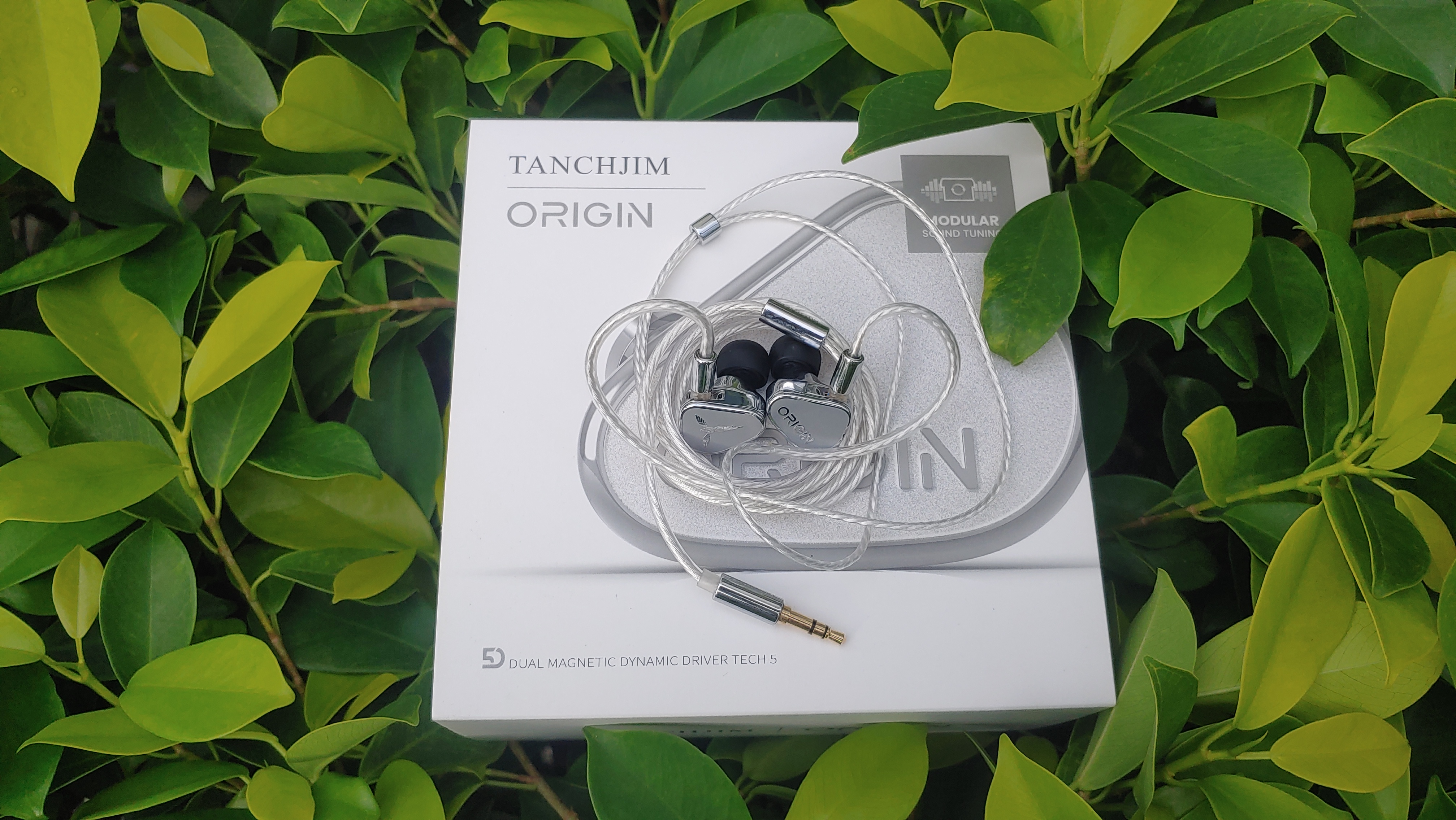
TANCHJIM is probably one of most consequential Chinese audio brands from the late 2010s on how its single product model truly influences and defines my preferred tonality, a matured neutral sound profile which quite uncommon at that time within its price range at under US$300, and that until this day, this particular model is still on my personal top 5 favourite single dynamic driver sets of all time. I’m actually talking about the Oxygen, and just like the featured product of this review article, it has a single dynamic driver configuration housed in a metal shell alloy but it has different build material as its dual-chambered structure dynamic driver is made of CNT with imported voice coil source from Daikoku.
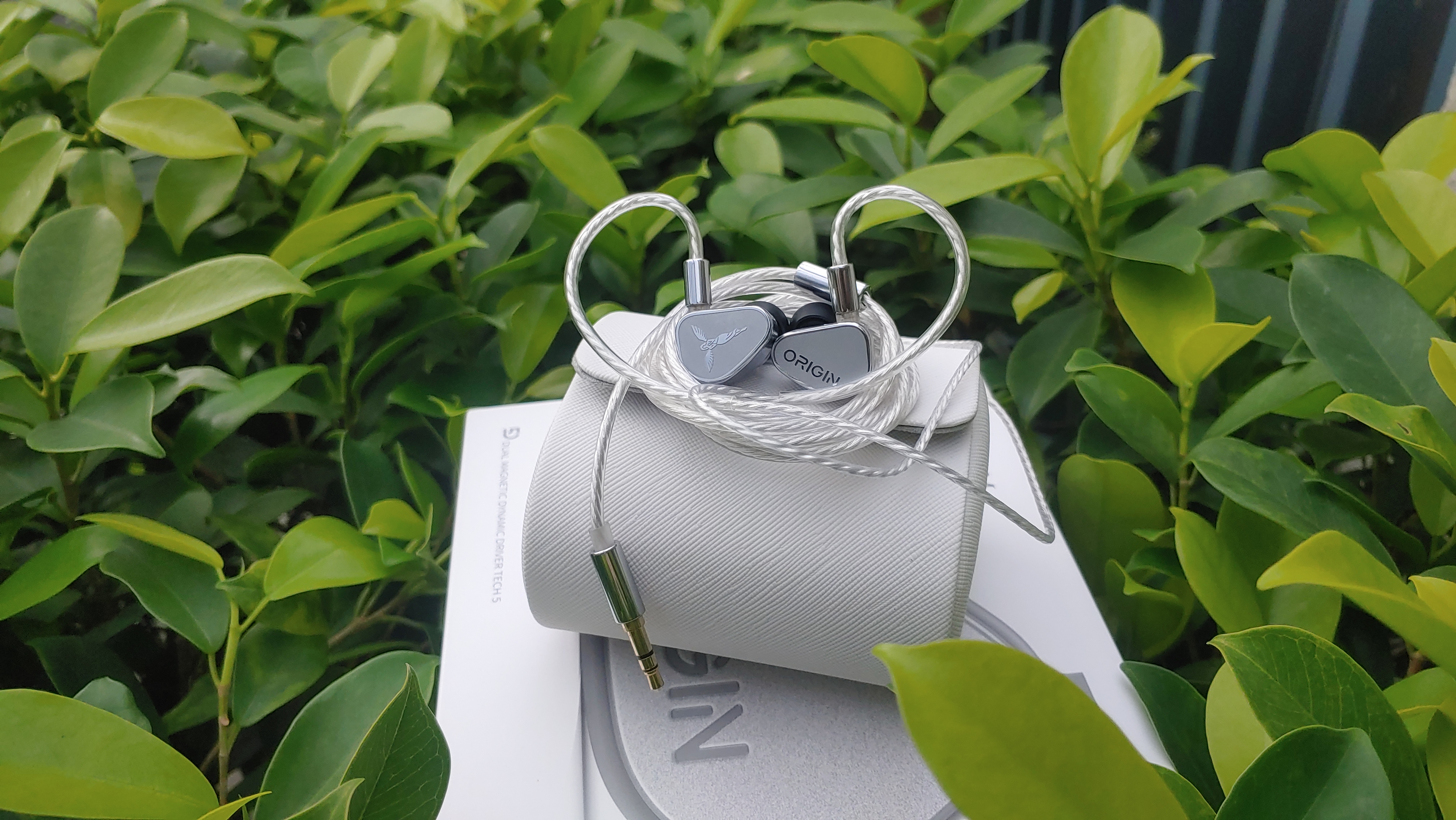
What I have here was its successor model, the TANCHJIM Origin. Like I mentioned a while ago that it has a single transducer configuration but it uses TANCHJIM’s latest breakthrough on dynamic driver technology, a DMT architecture and it was on its 5th generation that it will be also known as DMT5. The DMT5 architecture dynamic has a 10mm dual-chambered design with a well-optimised cavity structure for an accurate and detailed sound reproduction. It has a high quality composite material on its diaphragm made of a high polymer carbon nanotube diaphragm for a natural, crystalline and clear sound quality with low distortion due to its high magnetic flux and good power efficiency as it delivers a punchy bass response, a rich, clean and natural tone on its midrange and clear and crisp treble response.
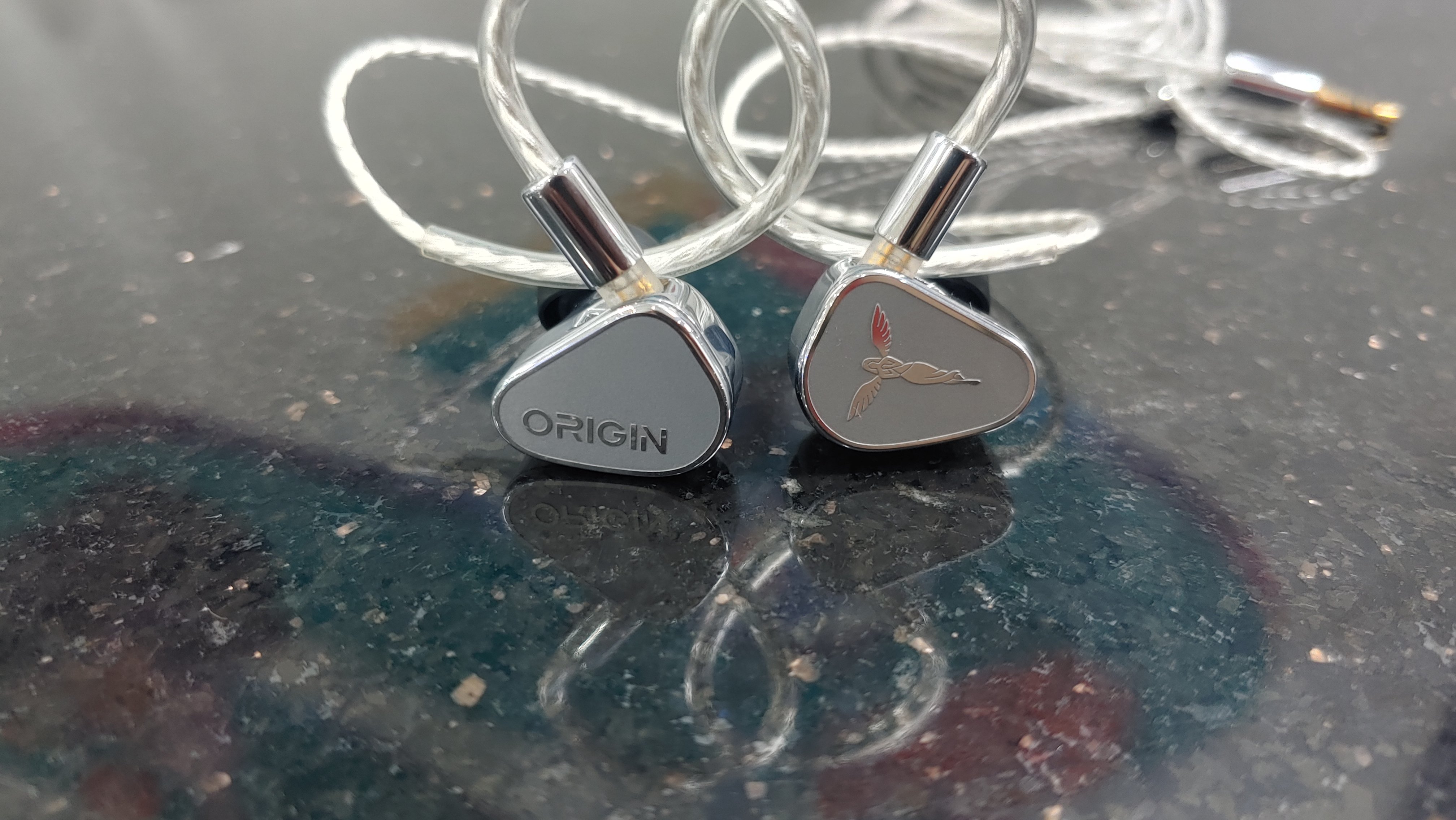
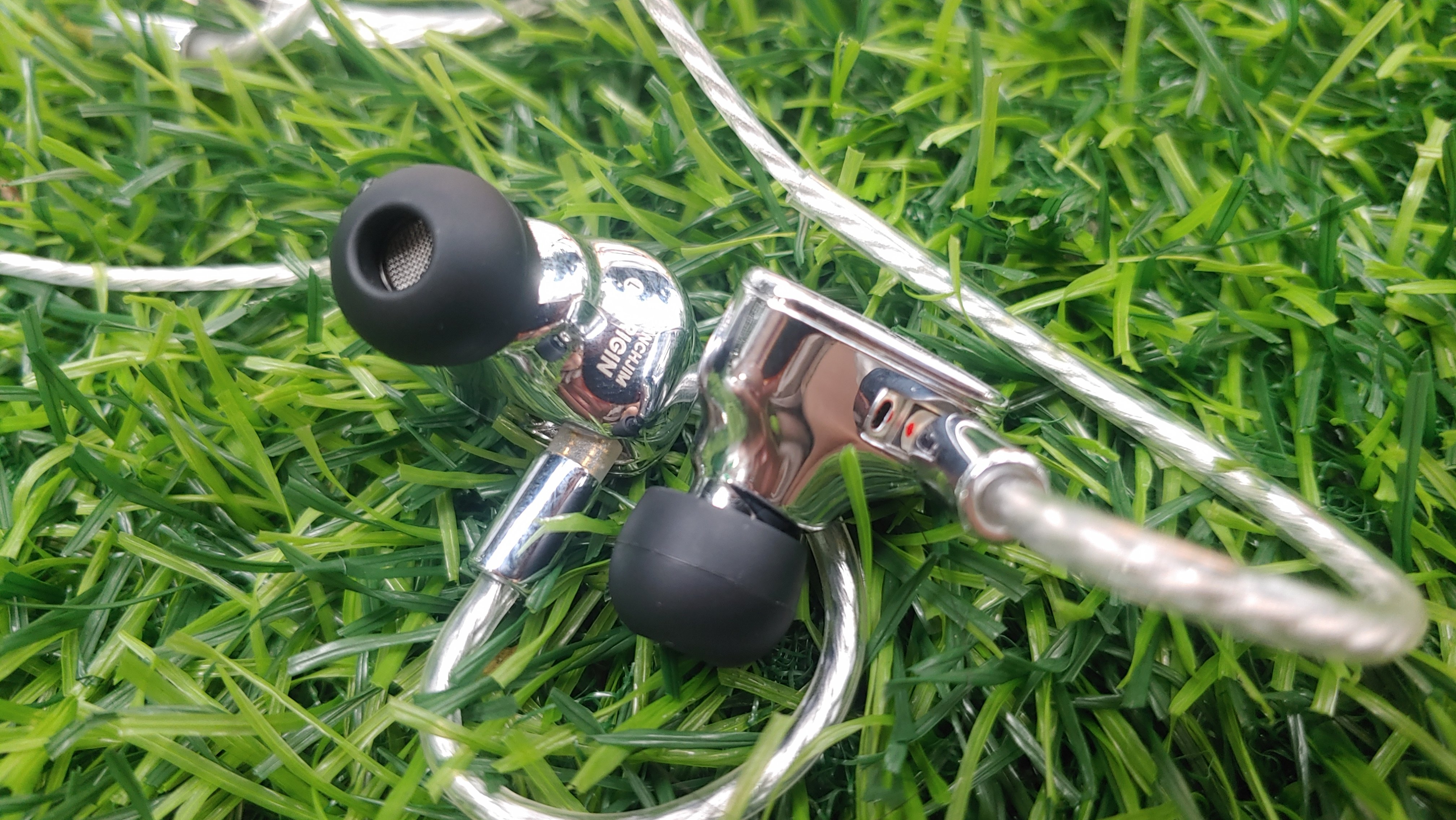
The driver was then encapsulated in a solid stainless steel shell chassis which still follows the design language of the OXYGEN which has a rounded trapezoid contours and it also offers a good ergonomic fit. The shells are of a medium-size and its stainless steel cavity base seems that it undergo via anodising and electro-plating process to achieve that buffed-finish surface to look more glossy, and also it has rounded square-shaped vent hole that was situated underneath its connector port and its main functionality is to allow some excess air pressure to escape that were generated from its high performance transducer inside. As regards to its faceplate, on its sandblasted-finish surface, each side has different print that were laser-etched as the left part has the model name while on the right part, there is a TANCHJIM logo in the shape of an ascending angel. Like all TANCHJIM products that I have encountered, it still implemented a 0.78mm bi-pin connector as its interlocking mechanism for its detachable cable.
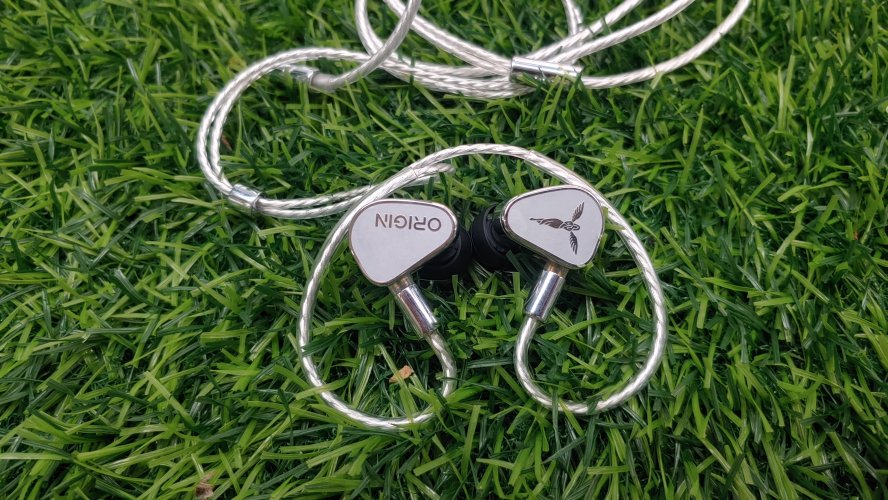
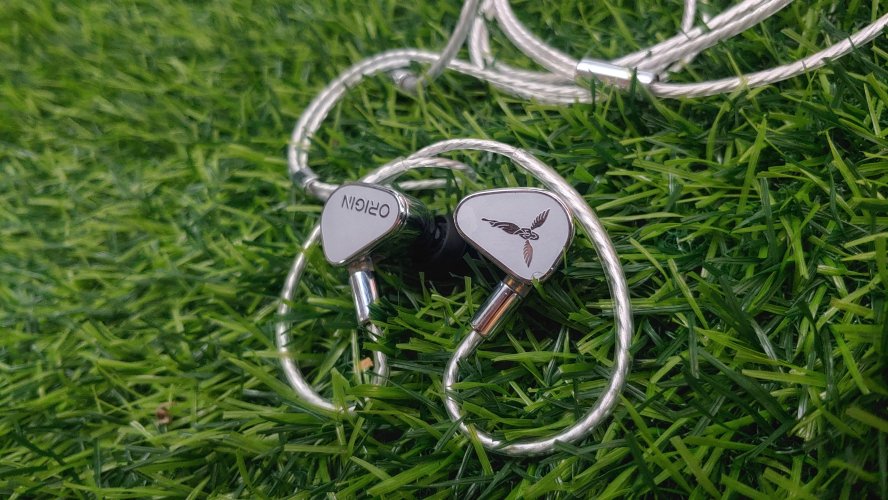
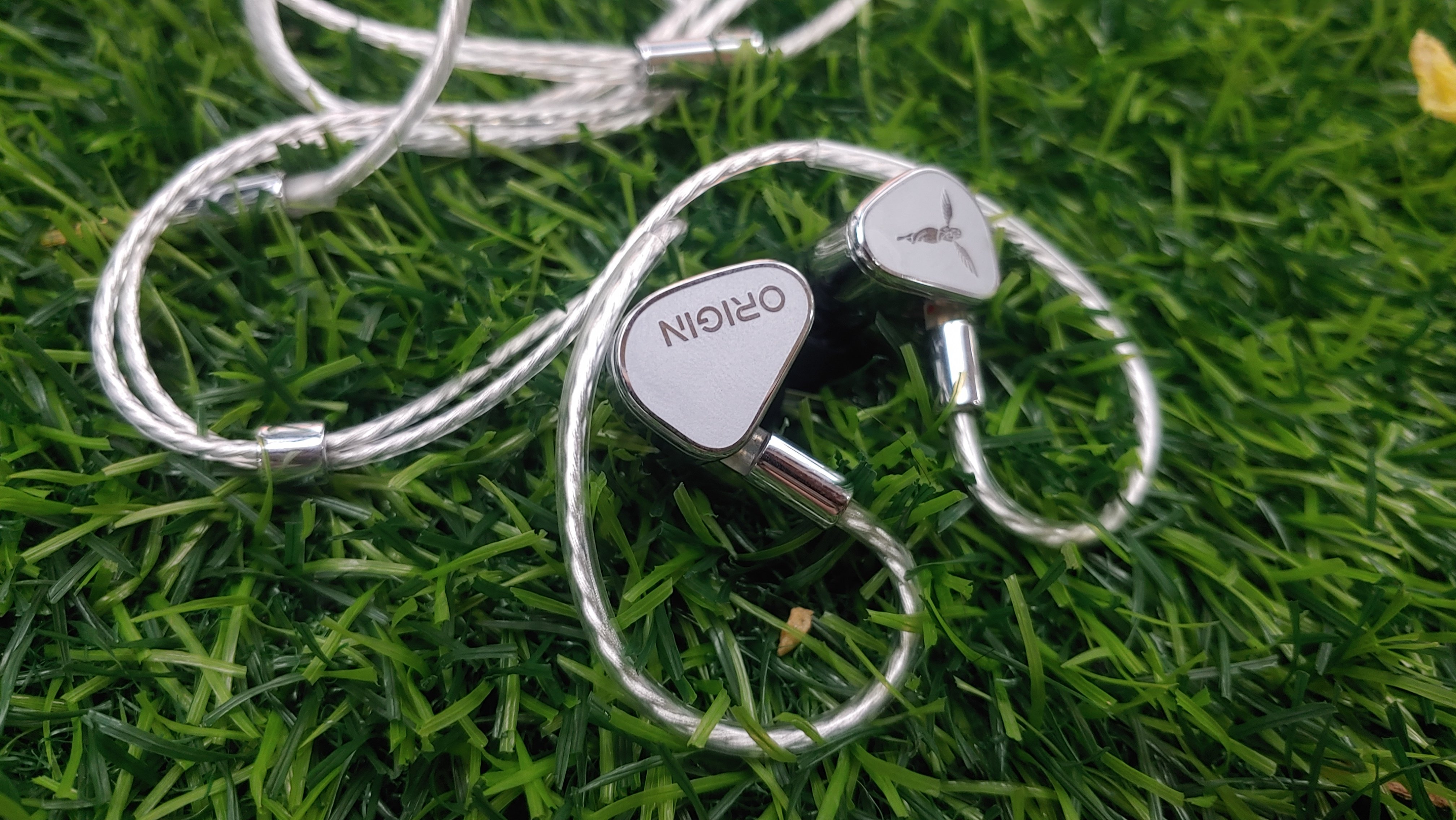
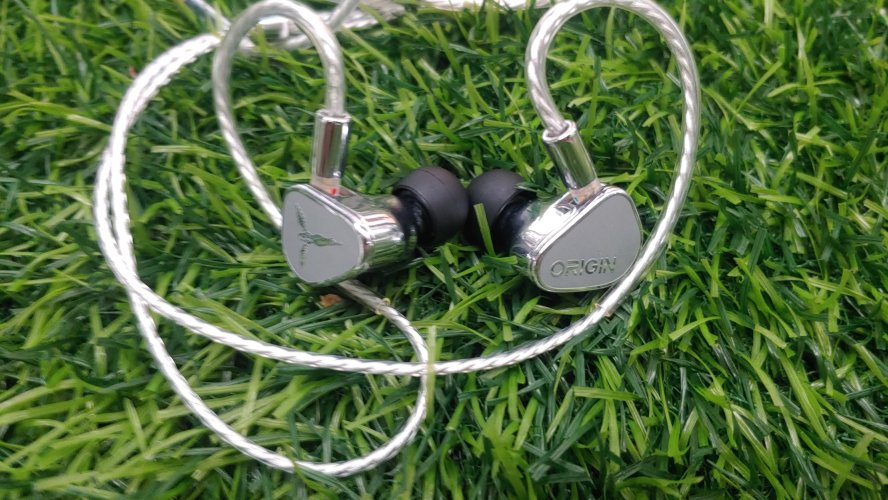
When it comes to wearability, with its smooth and rounded outline of its shell’s shape, it offers a comfortable fitting as it secures well into my lugholes as long as you get proper ear tips to pair with its nozzles which are on the stubby side in terms of length. With a firm fitting, it offers an excellent passive noise isolation as it was able to block unwanted external noises from the outside surroundings.
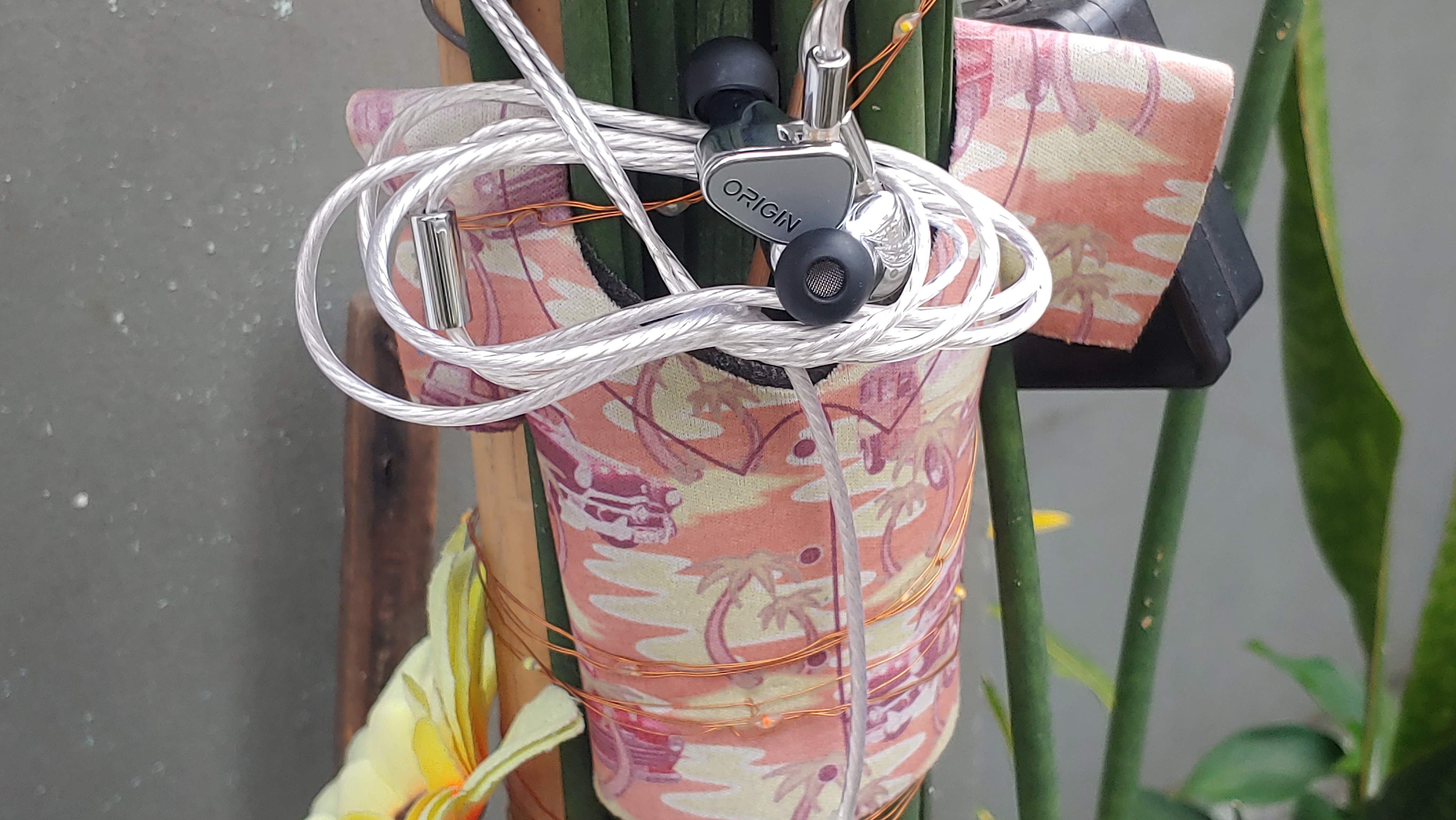
As for its stock cable, the overall construction of this one is leaner but it is pretty supple, flexible and has a resistance against entanglement. The cable itself is made of a high purity Litz 6N copper-plated silver wires that were twisted and then sheathed with PU insulator coating and with this particular set-up, it delivers a seamless transmission of a lossless pure audio signal for a detailed and accurate audio reproduction without any distortion at all. And on its termination end, it has a 3.5mm single-ended plug that was gold-plated for better conductive and at the same for wear and tear resistance., although I wish that the cable itself had a bit thicker profile along with a modular termination.
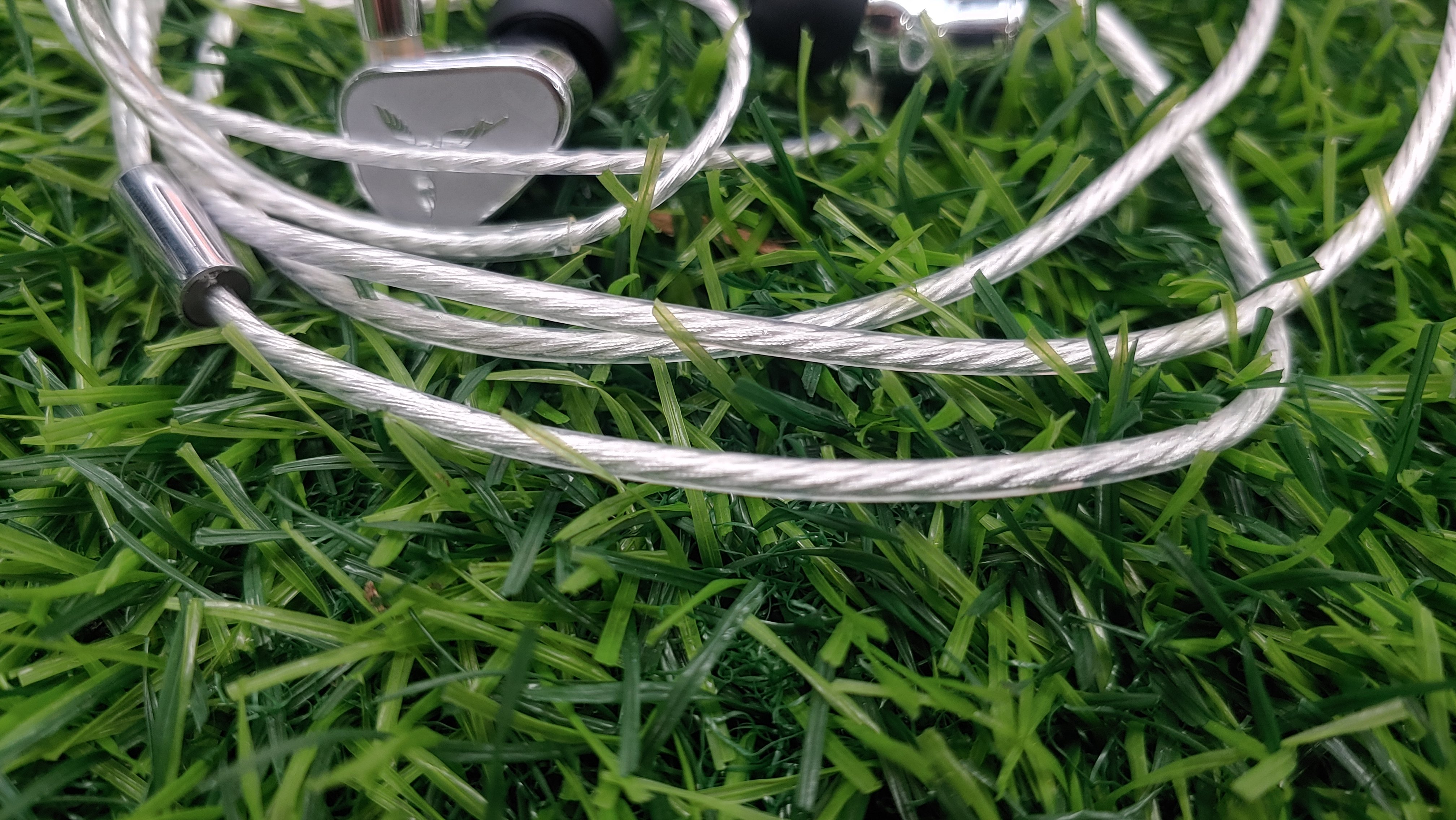
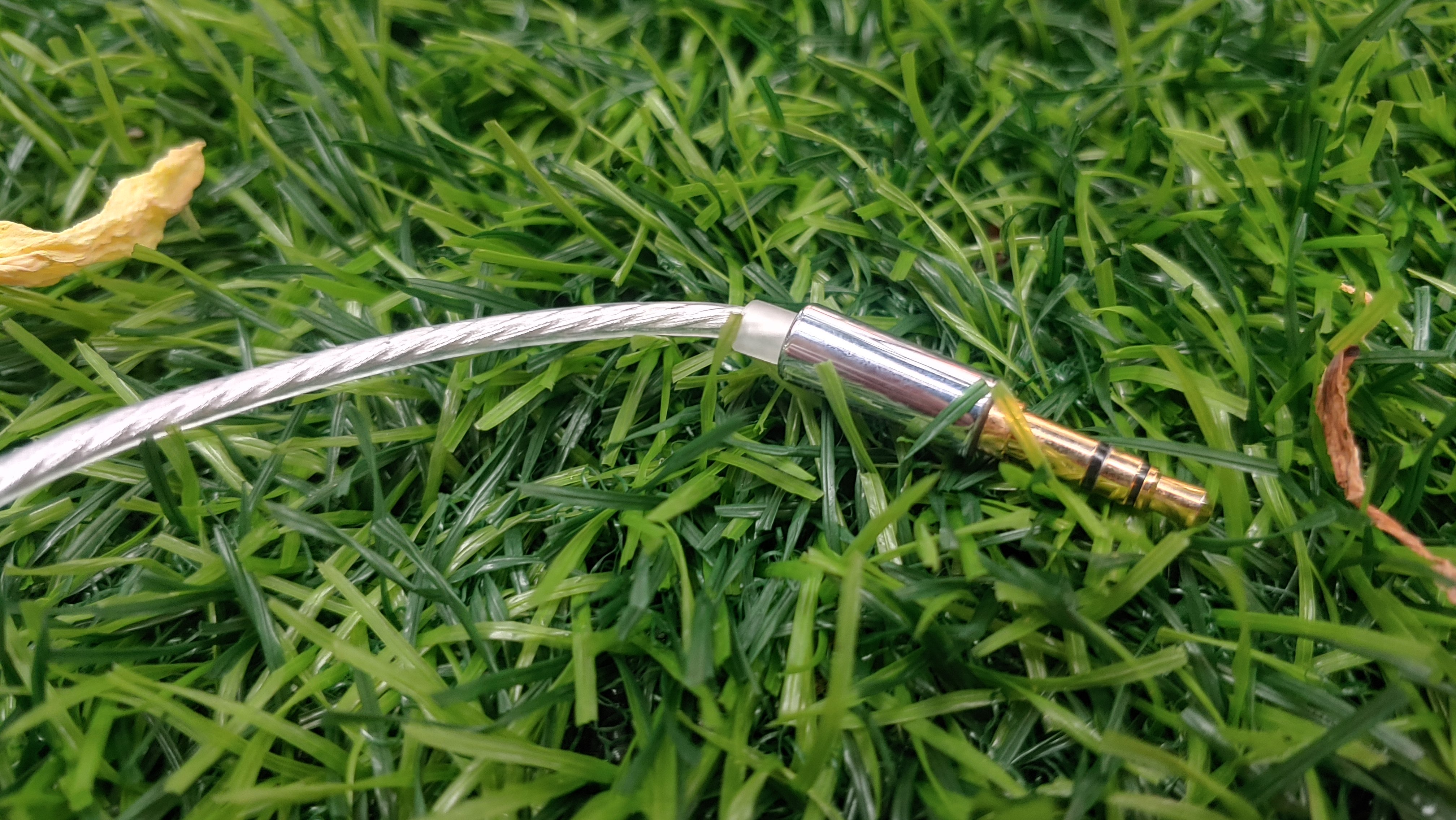
The product packaging of this one is quite abundant with accessories inside of its medium-sized bulky packaging box, and the contents were placed in an organised fashion.
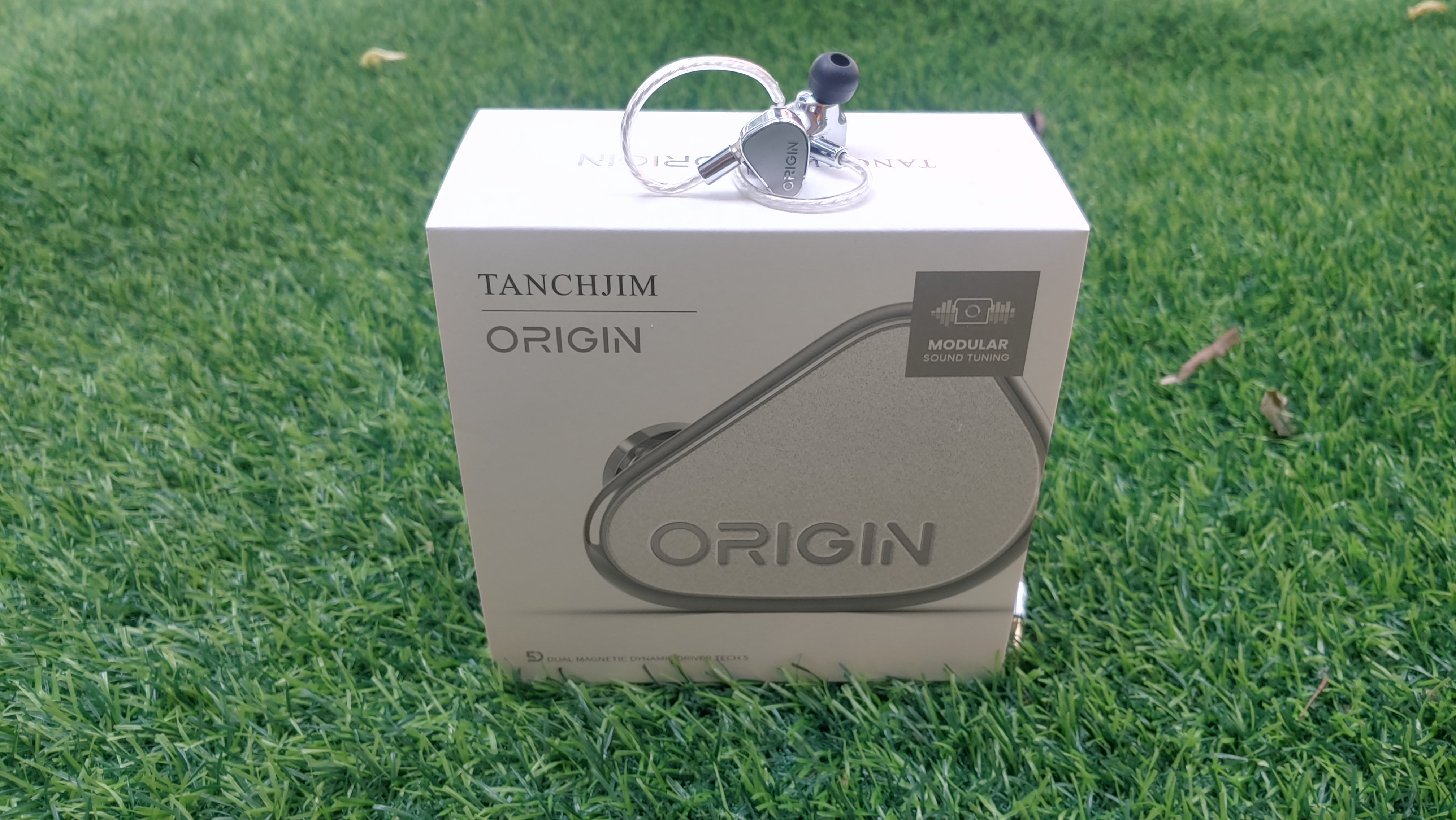
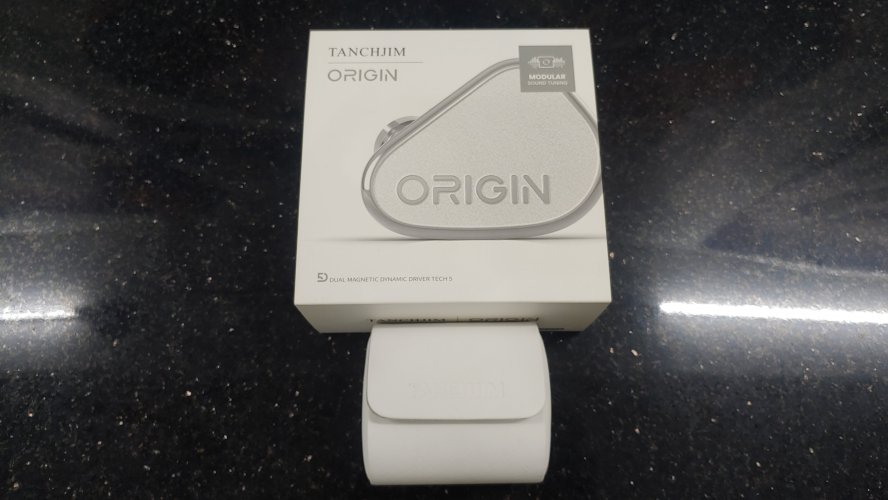
Here are the following contents inside of its packaging box:
- Pair of TANCHJIM Origin IEM transducer earpieces.
- Stock cable
- PU-leather storage case
- Three (3) pairs of balance bore silicone ear tips in different standard sizes.
- Three (3) pairs of wide bore silicone ear tips in different standard sizes.
- Tuning nozzle metal holder.
- Pair of “Standard” tuning filter nozzles
- Pair of “Dynamic” tuning filter nozzles
- Pair of “Low” tuning filter nozzles
- Paperwork like instruction manual and guide.
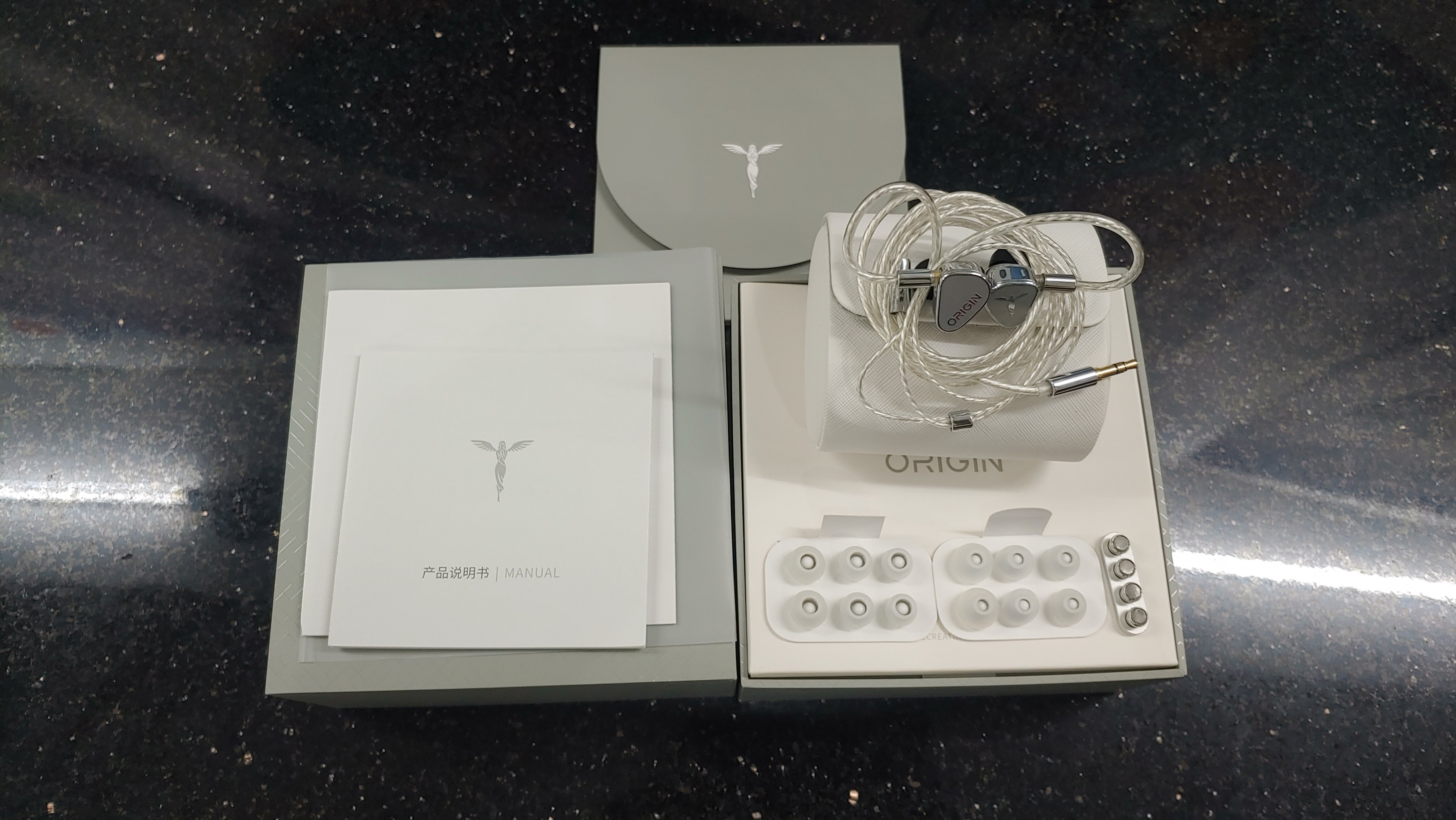
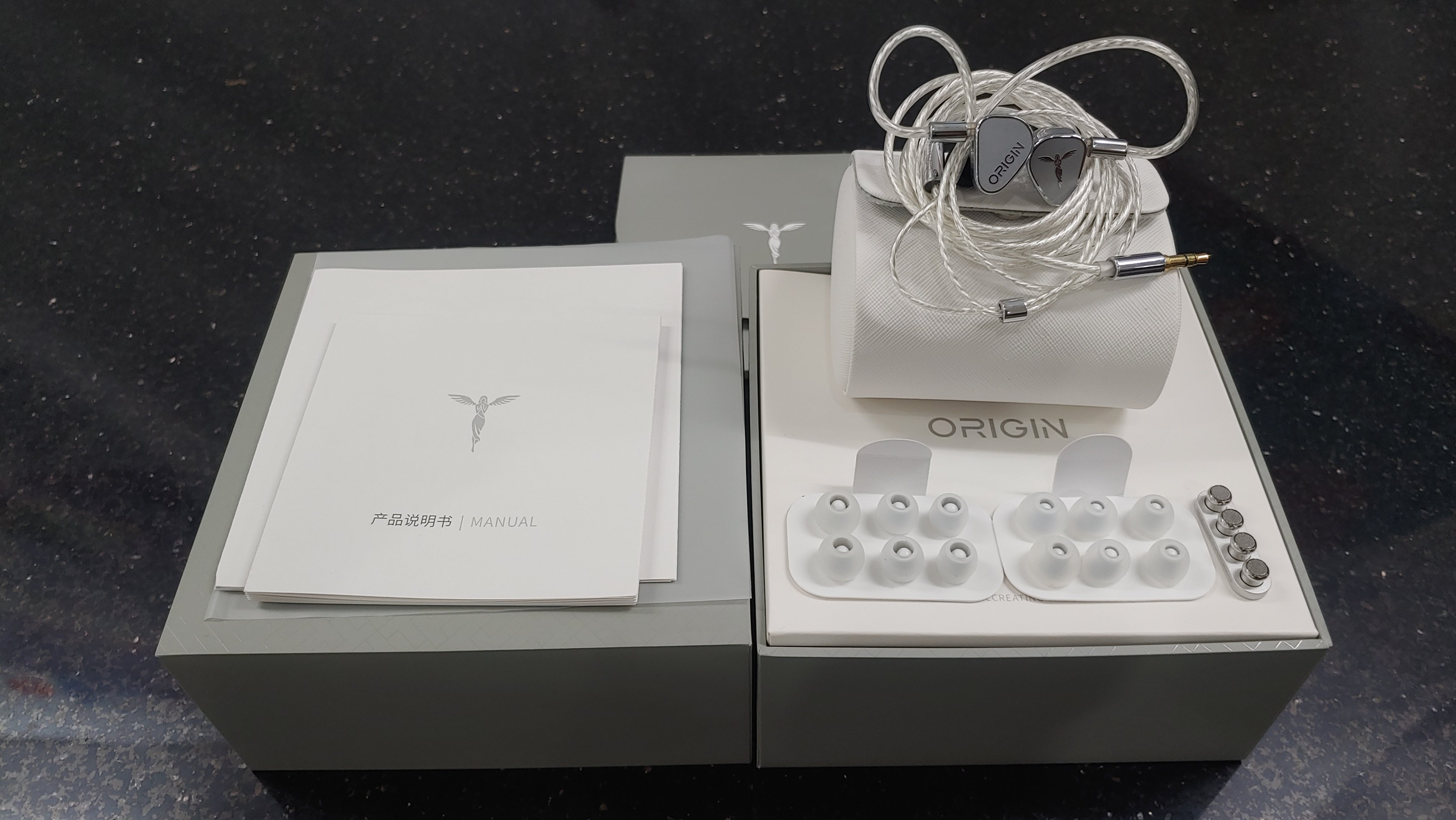
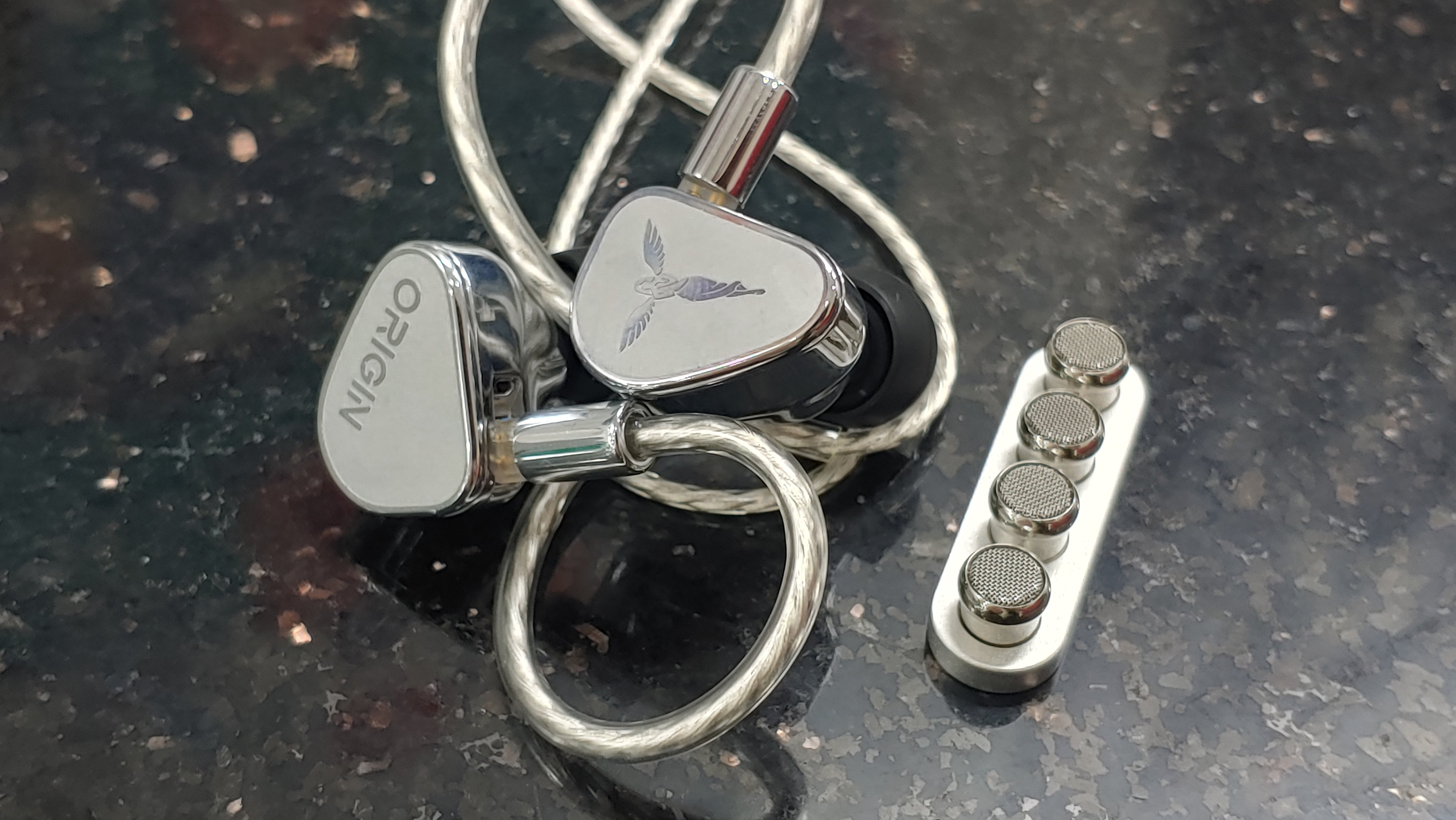
With the resistance rating of 126dB and a sensitivity of 16 ohms, this set is pretty sensitivity that it can be driven by devices with standard gain mode output but it also scales well with high gain output as this transducers’ high quality neodymium magnet is capable to take more more volume swing for an even more punchier response. Even at minimum requirement of amplification level, the Origin can deliver a very dynamic and a full range sound that encompasses across the frequency range.
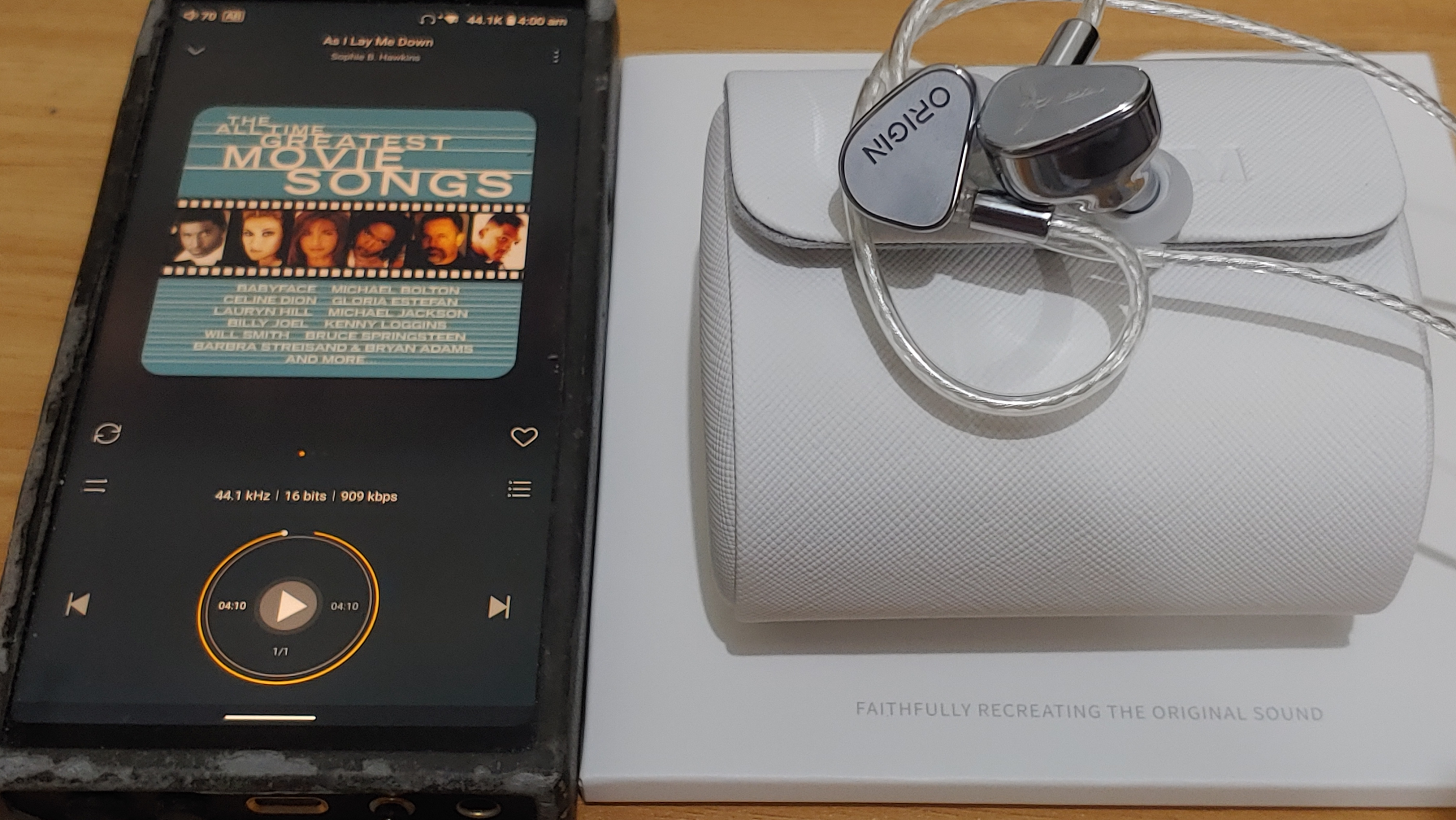
When it comes to tonal profile, in general, it has a balanced-neutral type of sound but since it features tuning filter nozzles, it offers a variety of tuning curves from its standard tuning filters with slight noticeable changes on their respective frequency range.
Note: the letter indicator of each tuning nozzle is quite tiny, that's why check them out in a good light visibility.
Standard Tuning Filter Nozzles - it has a standard balanced-neutral type of tuning as it has a precise punchy bass, a well-balanced with an ample energetic midrange and a mild brighter treble response.
Low Tuning Filter Nozzles - The brightest among the three tuning filters as it has subtle elevation somewhere on the upper mids and a bit tighter bass presentation.
Dynamic Tuning Filter Nozzles - the it has a slight warmth due to a a bit pronounced mid bass and a less energetic upper mids and presence treble that makes this set more of a mid-centric variant of a balanced-neutral tuning.
Most of the findings of its sound characteristics from respective audio frequencies of this set will be conducted in a Standard Tuning Nozzle Mode, but will insert some information on other tuning filter nozzle modes.
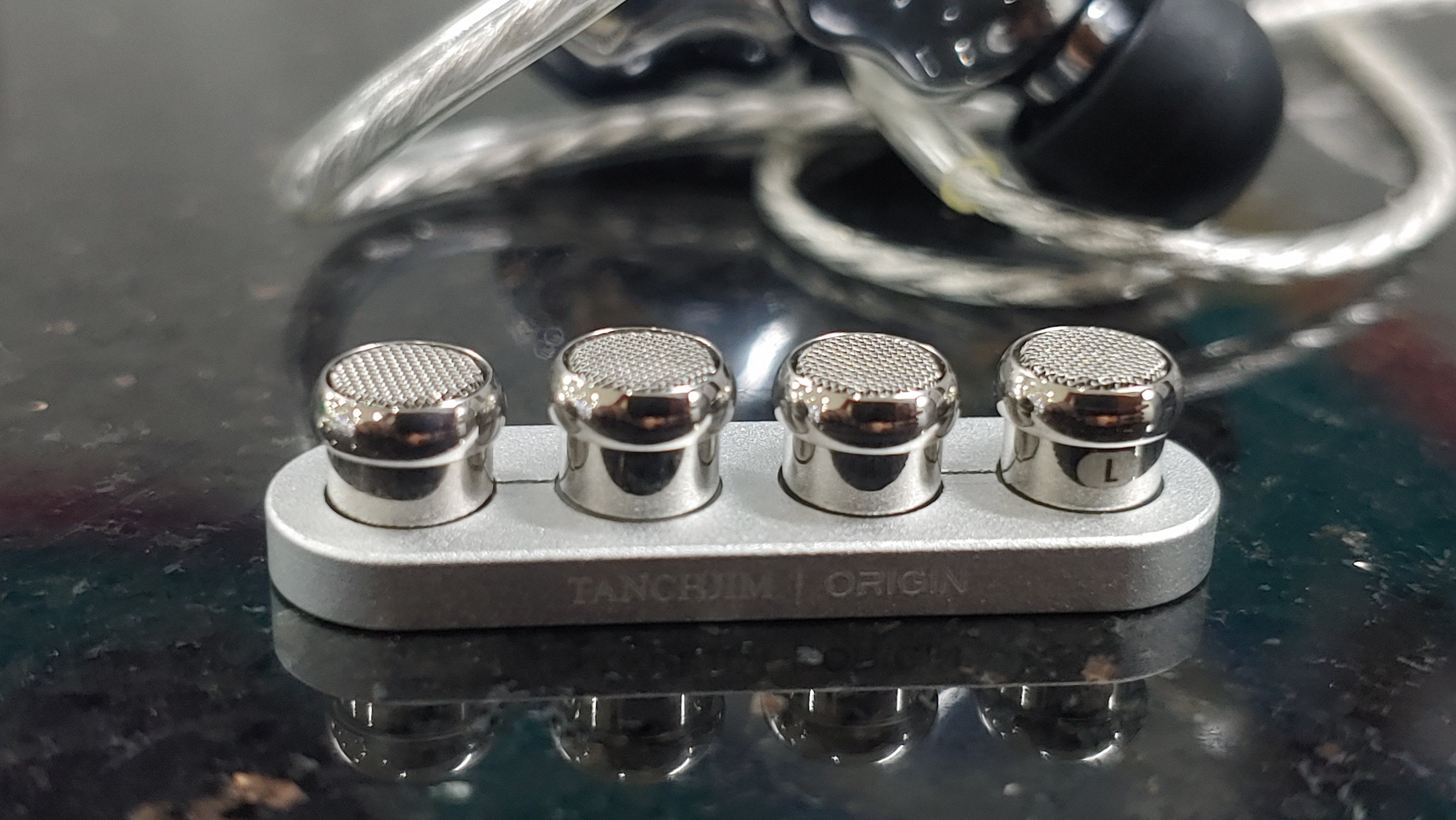
LOWS/BASS:
On a Standard Tuning Nozzle setting, it aligns on more focus on mid bass texture rather than sub bass presence in terms of bass quality while the Low Tuning Nozzle lessens the texture of the mid bass section while it improves the sub bass presence in a subtle manner, and on the Dynamic Tuning Nozzles has a discerningly more mid bass texture therefore it has it has a tad weighty. In general, the Standard Tuning mode has a precise, punchy and sufficiently tactual bass response, whereas the Low Tuning has a more a bit tighter, incisive and a bit rumbly sound and then on Dynamic Tuning Mode it has an impactful, more tactile and heft on its overall bass response enough to give an initial rhythmic drive but not really the bass quality that bass heads are seeking for.
As I mentioned a while ago that the sub bass presence is less prominent on both Standard and Dynamic Nozzles modes as this part of low frequency section has a fairly rumble and reverberations that were generated from certain instruments like synthesisers, drum machines, bass guitars and double-basses, but in a Light Nozzle mode, those sub bass grumble seems to be a bit felt more clearly. And with the mid bass texture, it has an ample body for the note weight and a sufficient fullness on some of the bass-clef instruments and an adequate richness on the deep, low octave male vocals.
Instruments and their sound characteristics:
Bass guitars - it has a resonant and sustaining sound from either plucking, muting or fretless on its note strings, it adds a bit more heft on Dynamic Nozzle mode and a bit more gritty and shaper tones on the Light Nozzle mode.
Double-basses - Compared to the bass guitars, it has more raspy and sombre sound, it sounds more mellower and weighty on the Dynamic Nozzle mode while on Light Nozzle mode, it sounds more menacing with less weight on it.
Bass kick drum - On Standard and Dynamic Nozzles modes, they have a thudding and sonorous sound while on Light Nozzle mode, it registers a more rumbly yet softer sound on every stroke.
Male vocals and their sound characteristics:
Basses - they have a fairly rich, full and deep tone to give a dense and dusk sound
Bass-baritones - they have a milder richness, moderate dark timbre and adequate deep resonance tone for a more “espresso-like” sound.
MIDRANGE:
The midrange quality of this one is quite neutral on its overall presentation while its maintains a well-balanced, fairly warmth and clean sound with some varying degree of on its energetic response depends on the tuning nozzles as both Standard and Light settings as more crisp and lustre while the Dynamic mode seems a bit restrained and controlled but not to the point of being lethargic. This makes the Origin more versatile and for both male and female vocals, as it has fullness on the former while an expressive and openness on the latter that makes them more organic, while instruments, they sound almost accurate with a quite natural timbre on each of them.
Male vocals have a warm, richer and fuller sound as they project that deep, strong and assertive vocal delivery. As for females, they sound more melodious, lighter and mostly in a brighter tone as they register a higher pitch.
Types of vocals and their sound characteristics:
Baritones - smooth, rich and lush sounding, on Dynamic Nozzle mode, its adds a bit warm and steely which will be suitable to noble baritones, kavalierbariton and dramatic ones.
Tenors - dazzling, clearer and juicy sounding, and in the Light Nozzle mode, it will add some spicy and tinny tones.
Countertenors - velvety, tender and delicate, and then in Light Nozzle mode, it sounds a bit coppery.
Contraltos - rich and smokey sounding from its chesty vocals, it loses some vocal weight on the Light Nozzle mode while on Dynamic Nozzle mode, it adds a heavier tone.
Mezzo-sopranos - velvety, sensitive and emotional, and Light Nozzle mode seems to give a bit more fiery and coppery sound.
Sopranos - creamy, silvery and silky sounding, and Light Nozzles seem to add more brightness to sound more shimmering while the Dynamic Nozzles seem to lessen the sheen from the Standard Nozzles configuration.
When it comes to instruments, as I mentioned a while ago, it has a natural sound from each class – an impactful rhythm sound of percussive, a vibrating sound from strings, a metallic and honky sound of brasses and airiness and brilliance of woodwinds.
Instruments and their sound characteristics:
Guitars - crisp, clean and sustaining sound, Dynamic Nozzles will make a sound a bit warm and midrange-y while Light Nozzles seem to add shimmer and resonant sound.
Violins - full, lustrous and vibrant sound, Light Nozzles will add more brilliance and bit metallic while Dynamic Nozzles will make then sound a bit rounded.and calmer
Cellos - sonorous, stately and sweet sound, Dynamic Nozzles will sound a bit warmer while Light Nozzles will add a bit of energy to sound more lively and sustaining.
Concert flutes - light, airy and ethereal sounding, a more brilliant sound on Light Nozzles and a more mellow sound on Dynamic Nozzles.
Piccolos - graceful and delicate sound, and it sounds more intense and shrill in Light Nozzle mode.
Clarinets - melodic, gentle and lustrous sound, Dynamic Nozzles seems to make it sound more rounded while on Light Nozzles, they sound a bit pale and incisive.
Saxophones - sombre, gentle and mild, a bit dark and soft on Dynamic Nozzles while it has a reedy sound on Light Nozzles mode.
Snare drums - bright and hard sound, Light Nozzles mode seems to add a sharper tone but it has that dry sound.
Tom-toms - warm, rich and resonant sound.
Field drums - full and sonorous sound.
Kettledrums - mellow, velvety and deep, a bit dry and hollow on the Light Nozzles and a tad boomy and rounded on Dynamic Nozzles mode.
Pianos - sweet, rich and clean sounding, a bit round sounding on Dynamic Nozzles and a crisper and a bit vibrant on Light Nozzles setting.
HIGHS/TREBLE:
The treble quality of this one is on the mildly bright side of tuning as it has a lustre and somewhat an even sound with a good amount airy especially for this type of transducer. The Dynamic Nozzles makes it a bit smoother while the Light Nozzles will add some gleam and shimmer on it to sound silvery. It has a bit accentuated upper-mids and presence section that adds a bit more presence as it boosts the clarity and definition on the articulation of vocals and a well-defined attack on instruments. And also, it seems that I didn't encounter any sibilance nor harshness on its overall sound, although on Light Nozzles settings, it might be too energetic and intense to some treble-sensitive folk out there within their listening threshold.
Instruments and their sound characteristics:
Cymbals - lustrous and metallic sound, Light Nozzles will add more sizzle.
Hi-hats - shortened resonant and buzzing sound, Dynamic Nozzles will sound a bit rounded and warm
Glockenspiels - silvery and bell-like sound, on Light Nozzle mode, it will sound a tad thinner and penetrating.
Celestas - ethereal and sweet sound, Light Nozzle mode will sound a bit shimmering, while on Dynamic Nozzle setting, it sounds a bit mellow and at the same time softer.
In the brilliance section, for a dynamic driver, It has airy treble extension even on the Standard Nozzle, and it augments a bit further on the Light Nozzle mode while decreasing its extension on the Dynamic Mode. It has a good amount of shimmer and sparkle on its overall treble quality.
SOUNDSTAGE, IMAGING & OTHER TECHNICALITIES:
For a single dynamic driver, this one has an excellent technical performance as it has a fairly spacious head stage. It has a wide lateral span on its perceived sound field with a relatively tall and immersive soundstage depth on its overall sonic dimensions and it presents a holographic stereo imaging presentation with a multi-layered soundscape with good separation on its musical elements in which I can certainly locate each of them accurately in an acoustic spatiality. Furthermore, playing complex multi-instrumental tracks like jazzes and orchestral recordings will be an effortless task for The Origin.
The driver performance of this one is relatively efficient; that small amount of power output will be able to deliver a fast transient response especially on the bass section and a more coherent and seamless sound quality for a tonal colour accuracy of musical elements. As for its resolution capabilities, it has a pretty solid macro-dynamics as it was able to stress the varying level of loudness on chorale lines and instrumental passage from the quietest up to loudness level, and it has a well-defined sharp definition on its micro-dynamics as it is very competent to extract grains, nuances and other micro-details from an audio track like notation textures, instrumental reverb tails and vocal ends.
PEER COMPARISONS:
EARACOUSTICS HI END MAX PRO
- One of the latest single driver sets in the market right now and it was priced at the same price range segment with the Origin.
- It uses a bit larger driver with a titanium dome on its diaphragm on its 11mm dual-chambered dynamic driver and then, it was housed in a solid UIEM-style aluminium alloy.
- It doesn't have a detachable tuning nozzle feature, so it only offers a single standard sound profile.
- This one is also packed with accessories and it has a thicker stock cable but it doesn't have a modular termination plug feature.
- This one has a very coloured tuning as it has an unapologetic classic V-shaped sound signature.
- This one has a more impactful and vigorous bass response, a recessed but it has warm and energetic midrange presentation and a bright but moderately airy treble response which makes more fun and engaging sounding in contrast with a more mature and refined sounding ORIGIN.
- It has a perceivable wide soundstage with a good depth that it also has a fairly-layered soundscape and a solid macro-dynamics on its resolution capabilities.
BQEYZ AUTUMN
- An old flagship single driver from BQEYZ that was released in 2022.
- It uses a larger dynamic driver with a diameter of 13mm and it was encased in a solid yet light aluminium alloy shell.
- It doesn't have a detachable tuning nozzle but it features an innovative feature, a detachable magnetic vent hole that will also influence its tuning profile as this set also offers three distinctive tonal profiles.
- Like all BQEYZ flagship models, it is also well-packed with accessories and it has thicker stock cables and it offers more types of ear tips.
- Due to its magnetic tuning vent holes, it offers three distinctive sound signatures, a balanced-neutral sound, a bright mild-U shaped sound and a warm U-shaped sound that makes this set offers more tonal profile options.
- On its balanced-neutral magnetic tuning profile, if it is compared to the Standard Nozzle of the ORIGIN, it has more punchier bass response, a bit textured and a tad energetic midrange and a slightly brighter but airy treble response but ORIGIN still deliver a more natural and correct timbre.
- This set has excellent technical capabilities as it can project a more cavernous soundstage dimension in an 3D-like stereo imaging on its sound field with a well-layered soundscape with good separation and it also has detailed resolution capabilities.
DUNU FALCON ULTRA
- One of the DUNU's latest single driver set-up and it is at the same price bracket with the ORIGIN.
- Like the ORIGIN, this set also utilises their proprietary dynamic driver technology called ECLIPS3 architecture and it was housed in a solid shell chassis in a magatama-like shape.
- It also features a detachable tuning nozzle albeit it only offers two distinctive tuning profiles.
- This is a DUNU set after all, so expect a more quantifying amount of inclusions like more types of ear tips to choose from and its stock cable has a bit thicker profile and it features a modular termination plug.
- With its detachable tuning nozzles, it offers two types of sound profiles, a U-shaped warmish-balanced sound and a U-shaped with brighter tonality.
- On the nozzle setting with warmish-balanced tonality, compared to the Standard Nozzle mode on ORIGIN, it has a more rumbly and impactful bass response, a bit recessed but it has a warmer and richer midrange and then smooth but only has a modest amount of airy extension, but overall, FALCON ULTRA has a more coloured tonality as it has more engaging and musical.
- In terms of overall technical performance, it has an average sound/speaker stage size that makes it more intimate with a concave-like stereo imaging presentation but it has good detailed resolution capabilities.
TANCHJIM OXYGEN (DEMO)
- This one is the predecessor of the ORIGIN and it also belongs to the same price bracket.
- It uses a proven dynamic driver with carbon nanotube diaphragm and it was also housed in a stainless steel shell structure that ORIGIN follows its design language.
- Unlike the ORIGIN, it doesn't have a detachable tuning nozzle system, therefore it only offers one tonal profile.
- Based on the web site, this one is also fully-packed with accessories although it has a stock cable with the same quality and it doesn't have a detachable tuning nozzle.
- Its sound signature has a balanced-neutral sound profile in which the ORIGIN follows its tuning but there are some still slight differences which I will explain after this.
- Compared to the Standard Nozzles setting of the ORiGIN, it has a more sub bass presence with fairly textured mid bass, a neutral and a bit less warmer with an energetic sound midrange presentation and a smooth and glossy treble response but as far as I remembered, treble air extension isn't part of its strongest tonal features as it is rather a modest in my opinion which on the weaknesses of the Oxygen.
- Technicality-wise, this set doesn't have that wide soundstage but it has good stereo imaging that presents a concave-like soundscape with a good layering along with a pronounced macro-dynamics and a good micro-detail retrieval for a single DD configuration.
In summary, TANCHJIM once again proves itself that it can still deliver a well-refined and almost impeccable product as it raises its bar over again as this set is somehow surpasses its predecessor, The Oxygen particularly on the technical performance that makes the Origin one of the most technical single DD IEMs in the audio market with its more mature and well-rounded neutral tuning. For sure that most of us will still wish for a better stock cable on this set as it seems that it might be outdated for its current design as there are stock cables from other sets with a more robust structure and even has a modular termination plug feature that makes it more adaptable.
As for its overall tonal performance, all I can say that this set is truly captivating as it almost aligned with one of my favourite tonal profiles and it is on a single dynamic driver configuration as it has a very balanced tonality of its overall sound quality and a comprehensive technical performance that makes the Origin is one of the solid IEMs in the market right now.
The TANCHJIM ORIGIN is currently available in the selected online stores in which I’ll post some non-affiliated links below.
►►TANCHJIM OFFICIAL STORE - AMAZON◄◄
For more TANCHJIM products, here are my reviews of their previous models.
● TANCHJIM MINO - ASANO TANCH EDITION
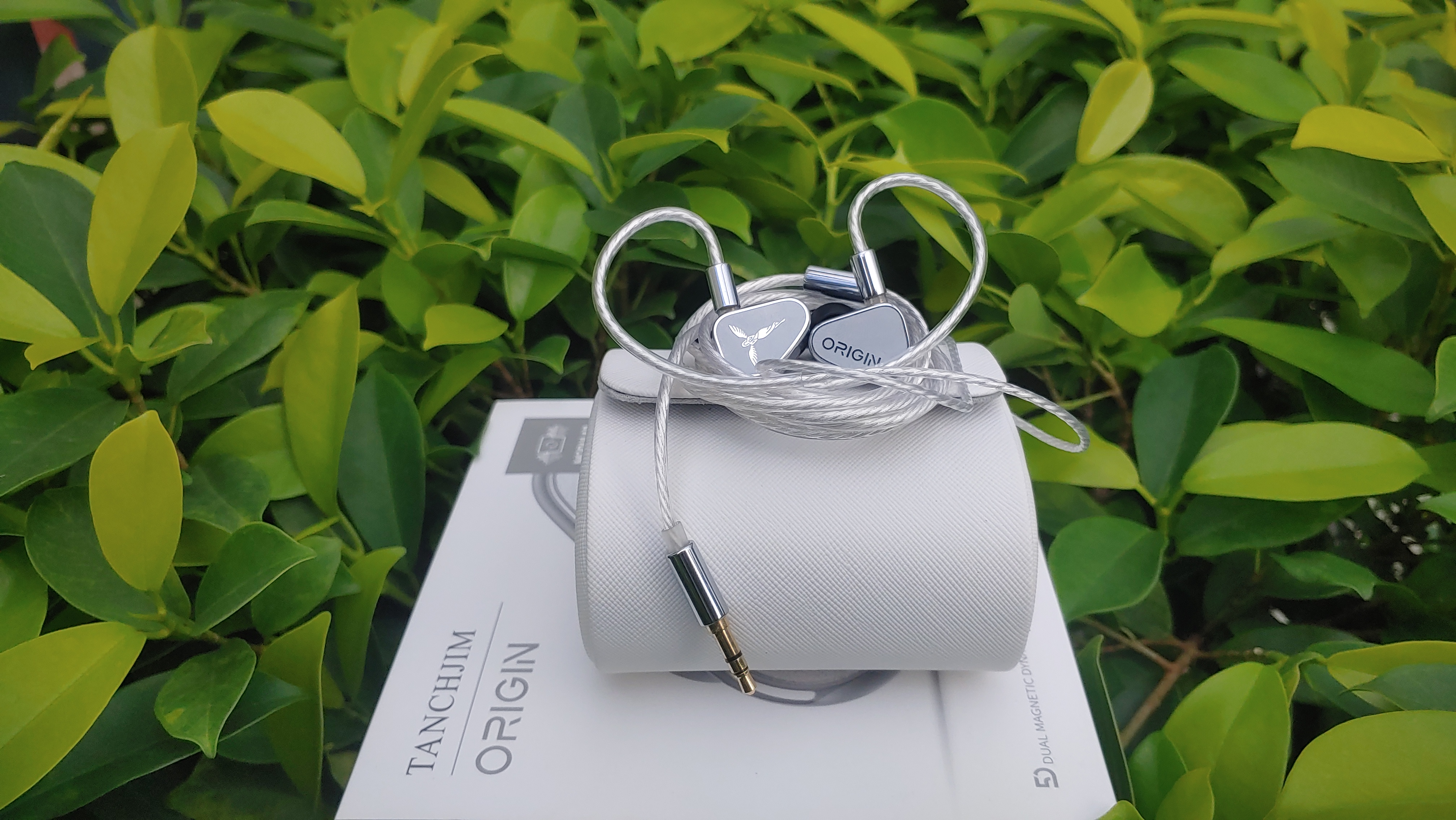
SPECIFICATION:
MODEL: TANCHJIM ORIGIN
IMPEDANCE: 16Ω
SENSITIVITY: 126dB
FREQUENCY RESPONSE: 20Hz – 48KHz
CABLE LENGTH: 1.25m
PIN TYPE: 0.78mm 2-PIN CONNECTOR
PLUG TYPE: 3.5mm
DRIVER UNIT(S): 1 DYNAMIC DRIVER
PROS:
● Solidly-built stainless steel shell chassis.
● The latest generation of its proprietary dynamic driver does really perform very well.
● It fits well as it offers comfortable wear and a good passive noise isolation.
● It features a detachable tuning filter nozzle.
● Well-packed with quality accessories inside of its packaging box.
● Since it has detachable tuning nozzles, it offers a variation of its tonal profile.
● It has a well-mature balanced neutral sound signature.
● Punchy and precise bass response. (Standard Tuning Nozzles)
● Tight, rumbly and clean bass response. (Light Tuning Nozzles)
● Neutral, well-balanced and clear midrange. (Standard Tuning Nozzles)
● A bit fuller and smooth midrange (Dynamic Tuning Nozzles)
● Clean and energetic midrange (Light Tuning Nozzles)
● Natural sounding yet accurate timbre on vocals and instruments.
● Smooth and rich sounding male vocals (Dynamic Tuning Nozzles)
● Crisp, clear and airy sound on female vocals, strings and woodwinds. (Light Tuning Nozzles)
● Lustre and airy treble response. (Standard Tuning Nozzles)
● Lively and crisp treble response. (Light Tuning Nozzles)
● It has an excellent overall technical performance from soundstage size up to resolution capability.
● Resolution capabilities of this one is quite resolving in terms of accurate reproduction on the firmness of its macro-dynamics and a fine micro-detail retrieval for a dynamic driver.
CONS:
● Wishing for a thicker built stock cable and also, has a modular termination plug in which this set does not have one.
● Definitely not for bass heads, and also for listeners who prefer more coloured tonality.
● Like all mirror-finish surface shell chassis, it is susceptible to fingerprints marks and light scratches.
● To differentiate the difference of each tuning filter nozzle, you need more concentration to analyse the subtle changes on its frequency section which takes more time, therefore if your ears aren’t trained on assessing tonal profiles, you might find it indistinctive.
TRACKS TESTED: ( * = 16-bit FLAC, ** = 24-bit FLAC, *'* = MQA, '*' = DSD, *'= .WAV)
Alison Krauss -When You Say Nothing At All *
Jade Wiedlin - Blue Kiss**
Led Zeppelin - When The Levee Breaks **
Mountain - Mississippi Queen *
Queen - Killer Queen **
Guns N' Roses - Patience *'*
Eric Clapton - Tears in Heaven '*'
Sergio Mendes- Never Gonna Let You Go '*'
Pearl Jam - Daughter **
Roselia - Hidamari Rhodonite *
Assassin - Fight (To Stop The Tyranny)*
Celtic Frost- Visual Aggression *
New Order - Blue Monday *
The Corrs- What Can I do (unplugged version) *
Jimi Hendrix Experience - Voodoo Child *
The Madness- Buggy Trousers *
Metallica - Motorbreath **
Mariah Carey- Always Be My Baby *
Destiny's Child - Say My Name *
Malice Mizer- Au Revoir *
Mozart - Lacrimosa *
New York Philharmonic Orchestra - Dvorak- Symphony 9 " From the New World." *
Eva Cassidy - Fields of Gold (Sting cover)*
Michael Jackson - Give In To Me *
Exciter - Violence and Force *
Diana Krall - Stop This World **
Debbie Gibson - Foolish Beat *'*
The Sisters of Mercy – Lucretia My Reflection**
Suzanne Vega – Luka **
Lauren Christy – Steep *
Ottoman Mehter - Hucum Marsi *
Diana Damrau - Mozart: Die Zauberflöte*
Type O Negative - Black No.1 *
Felix Ayo - Vivaldi: Presto **
Three Tenors - Nessum Dorma *
Mercyful Fate - Witches' Dance *
P.S.
I am not affiliated to TANCHJIM nor receive monetary incentives and financial gains as they provide me a review unit for an exchange of factual and sincere feedback from yours truly.
Once again, I would like to send my gratitude to TANCHJIM Official on Head-Fi for providing this review unit. I truly appreciate their generosity and trust towards me and other reviewers.
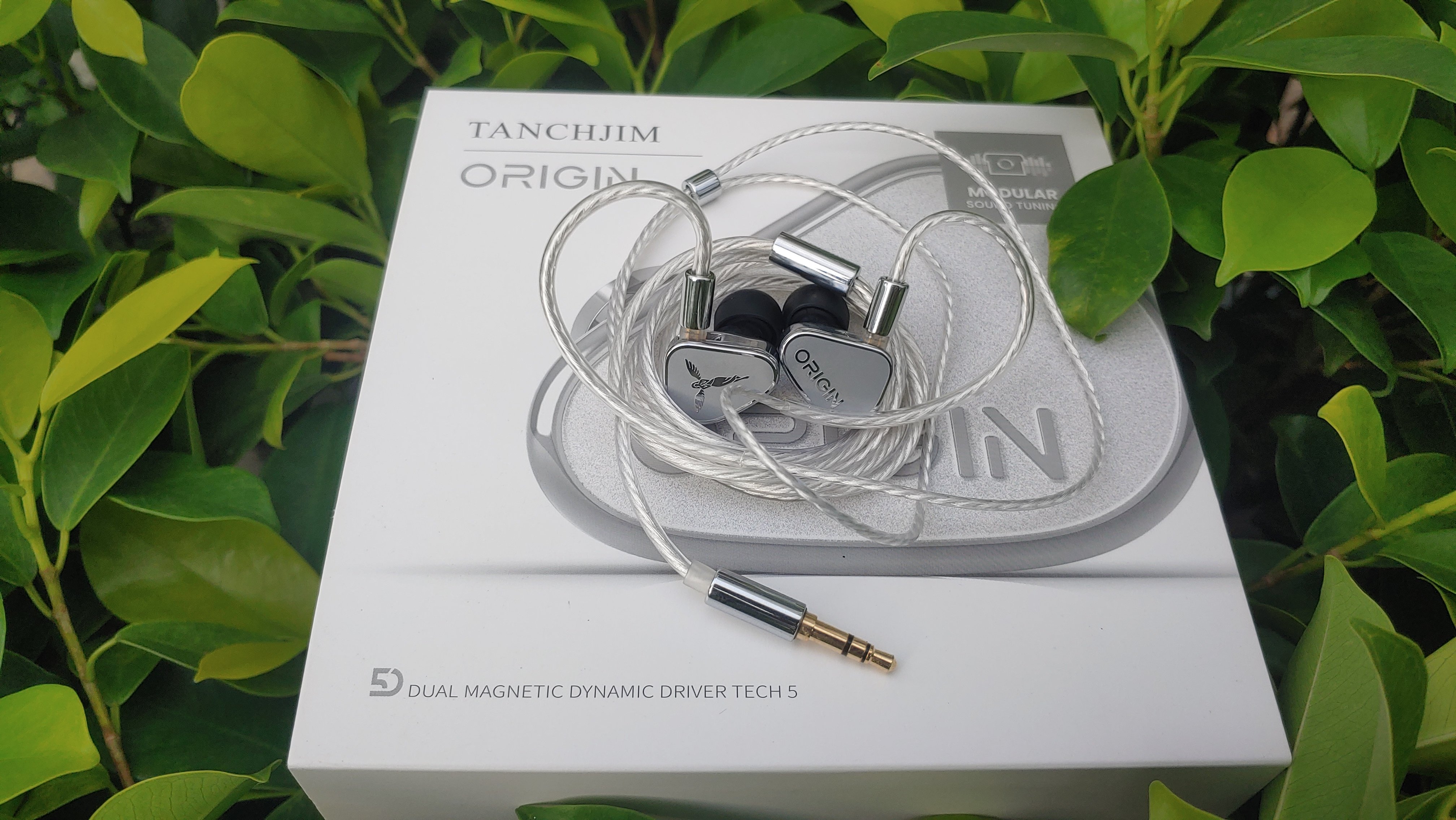
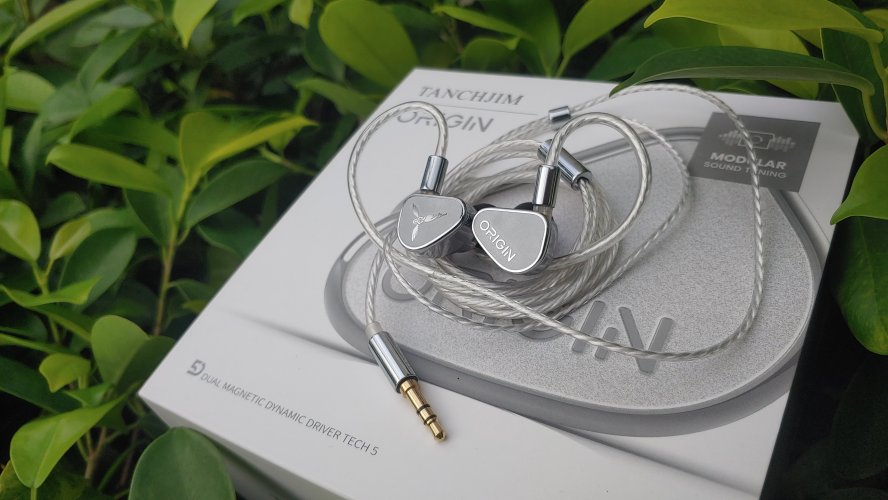
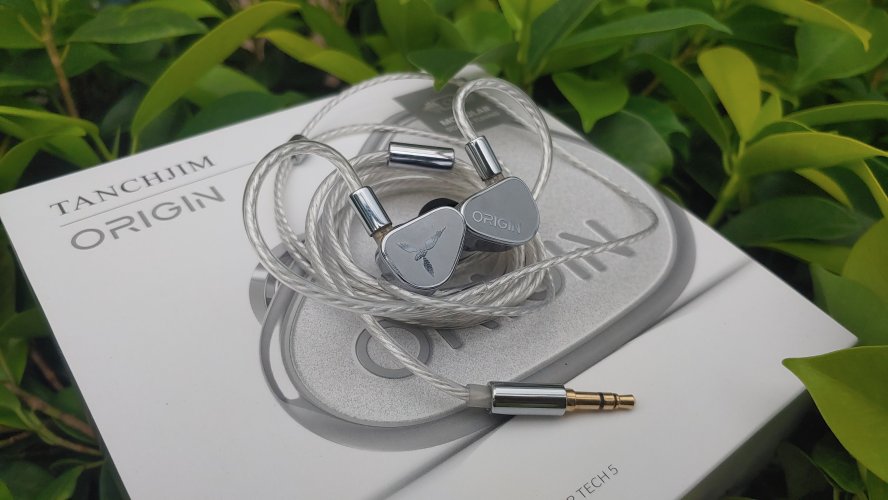
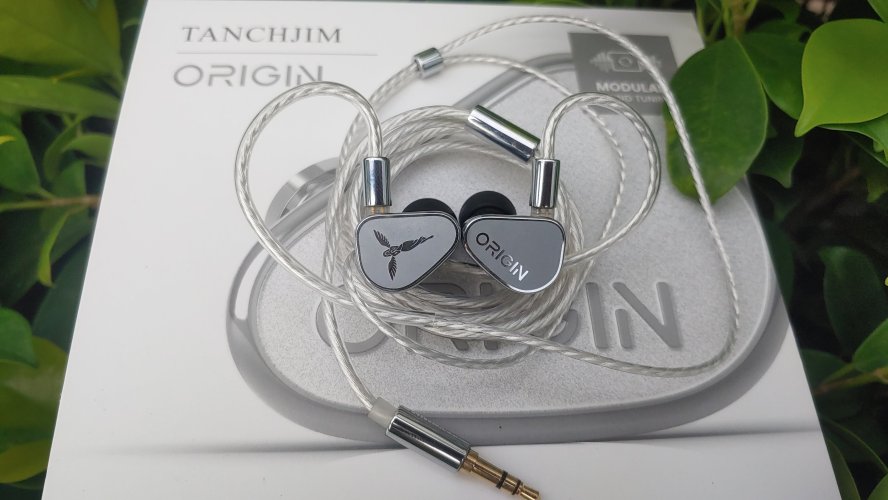
Excellent review!
ReplyDeleteWhat's your personal top 5 favourite single dynamic driver?